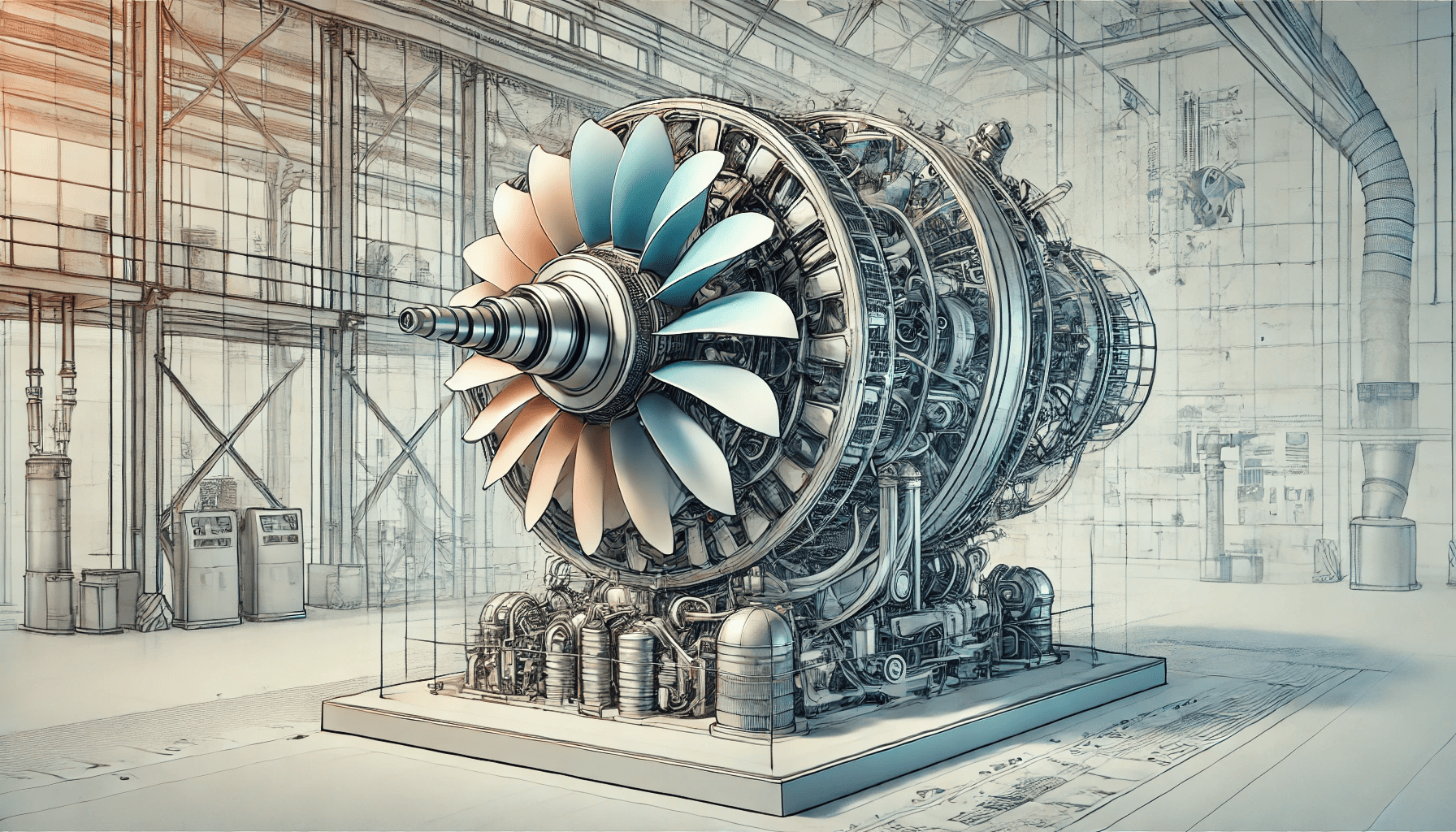The repair of hybrid turbines requires a special approach and specialized knowledge. These units are uniquely designed and operate under conditions other than standard turbines, making traditional repair methods ineffective. Their work is based on complex processes that combine both mechanical and electronic elements. An incorrect approach to repair may not only not solve the problem, but also lead to deterioration of the device’s condition.
The complexity of hybrid turbines lies in their non-standard configuration and operating conditions. They are often used in specific applications, such as variable-load transport or specialized industrial installations. This requires the use of unique materials and technologies that go beyond the usual methods. Traditional repair approaches can lead to reduced efficiency or repeated breakdowns. Instead, in some cases, you can use more modern methods, such as reverse engineering and 3D printing, which are used to create parts with high accuracy.
Particular attention should be paid to sourcesof information about such turbines. Most of the data is available only in closed service manuals, which makes diagnostics and repairs difficult. Therefore, professional repairs require the use of original technical materials and specialized equipment that meets the latest achievements in this field.
Specific features of hybrid turbines
Hybrid turbines differ from standard units in many design features. Their internal components are often made of composite materials that have high wear resistance, but require a special approach to repair. Traditional methods of restoration not only do not give the desired result, but can also lead to additional damage. For example, using standard temperature settings for soldering or welding can damage the composite layers.
One of the key problems when repairing hybrid turbines is proper diagnostics. The complex control systems integrated into these devices require a special approach to troubleshooting. Without the use of original diagnostic equipment and access to closed manuals, the probability of an error increases significantly. This, in turn, can lead to incorrect choice of repair methods, which increases the risk of failure after the first test.
The effectiveness of repairs depends on strictly observed technology and careful preparation. Each stage – from diagnostics to installation of the repaired unit-must be performed in accordance with the manufacturer’s recommendations. Only in this case can we guarantee the reliability of the hybrid turbine after restoration.
Key differences between hybrid turbines
Hybrid turbines are complex in design and use, which requires unique approaches to repair. Such turbines include elements that operate at high temperatures, as well as components that are sensitive to pressure changes. These characteristics make traditional repair procedures unsuitable, as they can lead to further damage to key components. That is why accurate diagnostics and the use of specialized technologies are crucial for restoring the performance of hybrid turbines.
For a successful repair, it is necessary to take into account not only the materials, but also the operating modes. For example, hybrid turbines are often used in variable load environments where standard maintenance procedures become inefficient. During the recovery process, it is important to rely on closed service manuals that contain critical data about the permissible limits of component operation. In this regard, qualified specialists use original methods described by manufacturers to ensure the durability and reliability of the turbine.
One of the key aspects of repair is the right choice of technologies and tools. A list of recommended procedures is particularly useful here:
- Use of high-precision instruments for measuring blade wear;
- Use of certified materials to eliminate microcracks;
- Perform all operations under strictly controlled temperature and pressure conditions.
This approach not only extends the service life of the turbine, but also minimizes the likelihood of repeated breakdowns.
Consequences of improper repairs
Improper repair of hybrid turbines can have extremely negative consequences. One of the main problems is reducing the efficiency of the node, which entails additional maintenance costs. In addition, repair errors can cause frequent failures and reduce the overall service life of the turbine. It is critically important to follow strict manufacturer guidelines to avoid serious consequences.
Mistakes made during the restoration of turbines often lead to the appearance of new defects. These defects can manifest as vibrations, unstable system operation, or excessive heating of individual components. As a result, the operational characteristics of the device significantly deteriorate, which causes dissatisfaction with customers and reduces the reliability of the enterprise. This scenario can be avoided if repairs are performed strictly according to prescribed standards.
Another consequence is increased operating costs. After incorrect repairs, equipment owners are forced to contact service centers more often, which leads to additional expenses. In addition, it makes maintenance schedules more difficult to meet and increases the risk of prolonged downtime. Thus, high-quality restoration of hybrid turbines is key to maintaining high productivity and economic feasibility.
Optimal repair approaches
High-quality restoration of hybrid turbines requires the use of modern technologies and specialized equipment. The use of accurate diagnostic devices allows you to identify hidden problems that cannot be detected by traditional methods. This ensures high repair accuracy, which ultimately increases the service life of the turbine. Innovative technologies play a crucial role in the successful recovery of complex components.
Technical personnel working with hybrid turbines must have a thorough knowledge of materials science and the latest recovery techniques. In addition, access to original manuals and training courses provided by equipment manufacturers is important. These resources help craftsmen adapt their approaches to repairs, following the developers ‘ recommendations as much as possible. Such training guarantees a high level of service and customer satisfaction.
Another key aspect is strict quality control at every stage of repair. From thorough cleaning of components to final assembly — all operations must be performed with the highest precision. This minimizes the possibility of defects and ensures stable operation of the turbine after repair. Thus, optimal approaches to the restoration of hybrid turbines ensure their reliable and long-term operation.
Questions and answers
Hybrid turbines have a complex design, and their repair requires the use of special technologies.
Improper repairs can lead to reduced turbine efficiency, frequent failures, and increased operating costs.
Modern diagnostic methods and specialized equipment ensure high accuracy and quality of repairs.
Hybrid turbine

